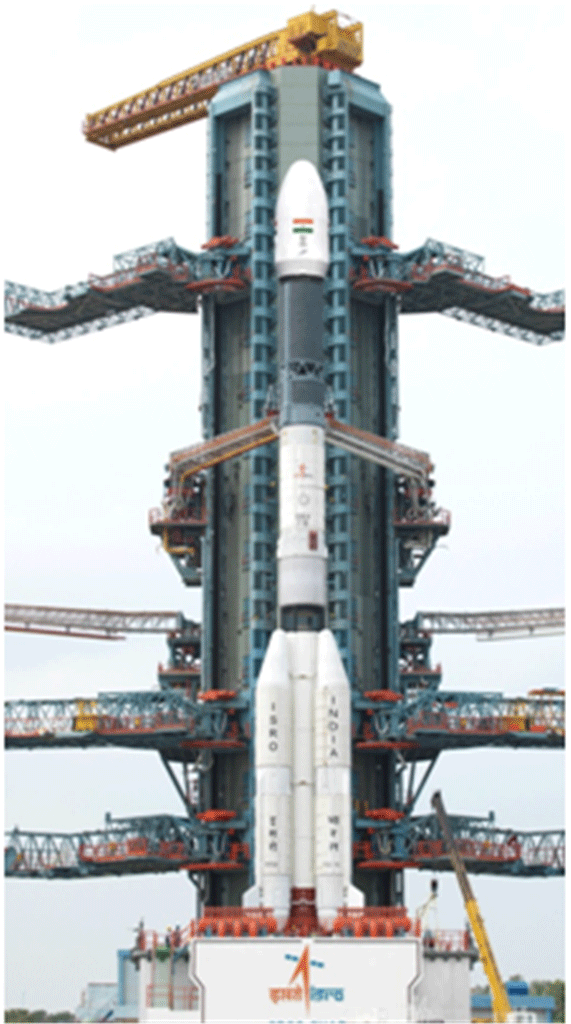GSLV
![Image of GSLV GSLV]() Geosynchronous Satellite Launch Vehicle (GSLV) is capable of placing 2.3
ton class of satellites like the INSAT & GSAT communication satellites and INRSS & IDRSS series
of spacecrafts into Geosynchronous Transfer Orbit (GTO). GSLV is 51.7 m tall and tallest among
all other vehicles of ISRO. It is a three stage vehicle with a lift-off mass of 420 ton. The first
stage comprises of S139 solid booster with 138 ton propellant and four liquid strap-on L40
motors,with 40 ton propellant. The second stage (GS2-GL40) is a liquid engine carrying 40 ton of
liquid propellant. The third stage is the indigenously built Cryogenic Upper Stage (CUS)
carrying 15 ton of cryogenic propellants (Liquid Hydrogen (LH2) as fuel and Liquid Oxygen (LOX)
as Oxidiser).
Geosynchronous Satellite Launch Vehicle (GSLV) is capable of placing 2.3
ton class of satellites like the INSAT & GSAT communication satellites and INRSS & IDRSS series
of spacecrafts into Geosynchronous Transfer Orbit (GTO). GSLV is 51.7 m tall and tallest among
all other vehicles of ISRO. It is a three stage vehicle with a lift-off mass of 420 ton. The first
stage comprises of S139 solid booster with 138 ton propellant and four liquid strap-on L40
motors,with 40 ton propellant. The second stage (GS2-GL40) is a liquid engine carrying 40 ton of
liquid propellant. The third stage is the indigenously built Cryogenic Upper Stage (CUS)
carrying 15 ton of cryogenic propellants (Liquid Hydrogen (LH2) as fuel and Liquid Oxygen (LOX)
as Oxidiser).
Cryogenic Upper Stage
![Image of Cryogenic Upper Stage Cryogenic Upper Stage]() The Cryogenic Upper stage employs the vital technology that enhances the payload capability to
make the vehicle suitable for launching communication satellites. India is the sixth among the
space faring countries to develop and test this technology, which is challenging considering the
special materials, alloys and fabrication processes required. Equally challenging was the
facilities established for testing the ignition and operation of the engine, particularly under
vacuum conditions. On 5th January 2014 witnessed the marvelous success of the fifth
developmental flight of GSLV with indigenously developed cryogenic stage(CUS-05) from
Sriharikota successfully placed the GSAT-14 satellite, weighing 1982 kg, in a precise Geo
Synchronous Transfer Orbit. This was followed by the successful missions given in the launch
history.
The Cryogenic Upper stage employs the vital technology that enhances the payload capability to
make the vehicle suitable for launching communication satellites. India is the sixth among the
space faring countries to develop and test this technology, which is challenging considering the
special materials, alloys and fabrication processes required. Equally challenging was the
facilities established for testing the ignition and operation of the engine, particularly under
vacuum conditions. On 5th January 2014 witnessed the marvelous success of the fifth
developmental flight of GSLV with indigenously developed cryogenic stage(CUS-05) from
Sriharikota successfully placed the GSAT-14 satellite, weighing 1982 kg, in a precise Geo
Synchronous Transfer Orbit. This was followed by the successful missions given in the launch
history.



